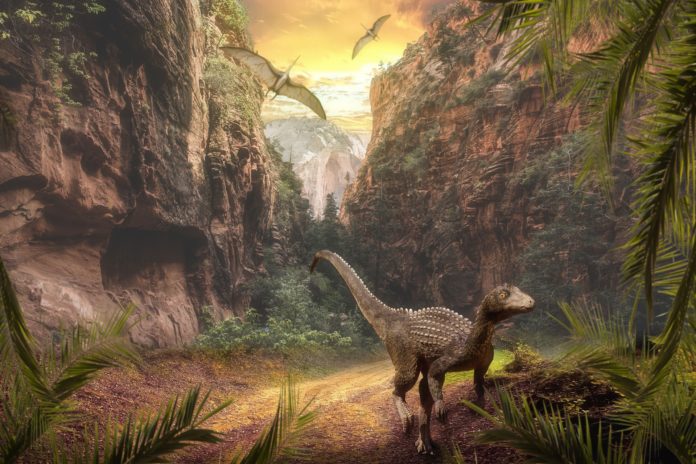Sixty-six million years ago, a cataclysmic asteroid impact in Mexico’s Yucatán Peninsula caused the extinction of nearly all dinosaur species alive at the time. Yet a new study from the University of Alberta suggests that most of these species were already in decline and had been on track to extinction before the impact even occurred.
The study was supervised by Philip J. Currie, a palaeontologist in the University of Alberta’s Faculty of Science, and published in Nature Communications.
Were dinosaurs in decline before the asteroid hit?
While the asteroid was likely responsible for the swift extinction of many dinosaur species, palaeontologists have long wondered whether dinosaurs were already in decline before it hit. Global climate change events, along with the emergence of mammals, could have posed risks for dinosaur species present during the Cretaceous period, causing their numbers to dwindle over time.
To learn more, Currie and his colleagues spent five years studying six major dinosaur families. Among these were three carnivore families (including Tyrannosaurids) and three families of herbivores, which together represented the majority of species present at the time.
They specifically chose these six families because their fossil records were extensive throughout the Cretaceous period, and because each family had at least 100 unique fossils available. Other families alive during the Cretaceous period (for example, the four families that make up the Allosauroidea) had very few fossils available, and were therefore excluded from the study.
The team compiled a catalogue of nearly all known fossils for the species in these families, which ended up totalling more than 1,600 unique samples. After determining an approximate age for each fossil, they modelled how different species had evolved and/or declined over time. Decline in this sense could mean both a decline within a particular species, and a decrease in speciation within the family — in other words, fewer new species evolving over time.
The team also modelled how different assumptions might bias their results. An incomplete fossil record or variable fossilization conditions, for example, could lead the team to incorrectly believe that a species was in decline. However, even in the case of low fossilization rates (with as little as one to three fossils preserved per species) and a highly incomplete fossil record (with as many as 80% of all fossils missing), the researchers found that their conclusions held true.
The fossil record shows that dinosaurs were in trouble
After running their models, the team found a sharp decline in all six families beginning 10 million years before the asteroid impact occurred. The decline wasn’t limited to any particular location in the world. These results suggest that while the asteroid impact may have sped up their decline, dinosaurs were already in trouble.
The authors go on to speculate about what could cause such a widespread extinction event across so many species.
“One theory is climate change,” said Fabien L. Condamine, a research scientist at the CNRS and first author of the study, in an article for The Conversation.
“At that time, the Earth underwent a period of global cooling of 7 to 8 °C. We know that dinosaurs need a warm climate for their metabolism to function properly [… so] this temperature decrease must have had a very strong impact on them.”
The team’s analysis also revealed that herbivore species started to decline before carnivores. This could suggest that something caused herbivores to die out first, which then led to carnivores dying out due to a lack of adequate food sources.
Although it’s difficult to say for sure, Condamine believes that many dinosaur species would have died out even if the asteroid had never hit. But other species that were particularly resilient — like the duck-billed Hadrosaurs, for example — may have been able to rebound.
“What we can say is that the ecosystems at the end of the Cretacious period were under significant pressure […] and that the asteroid dealt the final blow,” Condamine explained.
“This is often the case in the disappearance of species: first they are in decline and under pressure, then another event intervenes and finishes off a group that may have been on the verge of extinction anyway.”








































